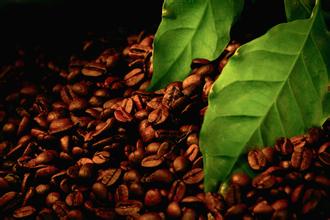The taste of Nicaraguan coffee beans the grinding scale flavor description of the origin of the variety
The taste of Nicaraguan coffee beans the grinding scale flavor description of the origin of the variety
The feeling of coffee in the mouth is the most fascinating. This delicate taste can make the taste of coffee more complete and meticulous, so that the taste nerve can more fully experience the rich taste of coffee. The smooth taste can reduce the clutter caused by rich taste and remember the different feelings brought by different taste more clearly.
Planted with volcanic ash and shaded trees, it produces high-quality Nicaraguan coffee with a mediocre, soft and slightly sour flavor. Nicaraguan coffee is the largest of all coffee beans, while MADRIZ (Madriz) is located in the mountains of northern Nicaragua, adjacent to NuevaSegovia,Jinotega and Esteli, the area is quiet and elegant, with the famous Somoto Canyon, and the local residents are mainly indigenous peoples of various tribes and people who mixed with the Spaniards in the colonial period (mostly Chorotegas). The local production of coffee, the development of arts and crafts processing trade, as well as traditional delicacies. Madriz is characterized by a cool climate, its small town looks simple, but features beautiful roofs and special tile white buildings, there are also many coffee plantations, and the mountains are covered with verdant pine and oak forests.
Madriz is an ecological coffee with a very hard shell. In the pure natural planting environment, it uses more complex operations to maintain the delicate aroma and taste of the coffee; it is produced in northern Nicaragua between Matagalpa and Jinotega, with an average annual rainfall of 1500-1700mm and a temperature of 20-29 degrees Celsius. All the coffee is selected manually, and the labor and time cost is much higher than that of ordinary beans.
Nicaraguan coffee belongs to Central and South American style coffee, although the acidity is not very high, but it feels refreshing. The mellow degree is also not high, but the overall feeling is just right, neither thin nor too strong. To make it easier to accept. The taste of red wine can be vaguely felt in the shallow sour taste, which is also a major feature of Nicaraguan coffee. It's not as obvious as Kenyan coffee, but it doesn't matter if you feel gentle and gentle.

Important Notice :
前街咖啡 FrontStreet Coffee has moved to new addredd:
FrontStreet Coffee Address: 315,Donghua East Road,GuangZhou
Tel:020 38364473
- Prev

Brief introduction of Ramon Coffee Bean Flavor description Grinding scale area Manor in Colombia
Colombian Ramon Coffee Bean Flavor description Grinding scale region Manor brief introduction to Colombian coffee varieties are mainly small-grain coffee. Plants are small trees or large shrubs, 5-8 m tall, usually much branched at base; old branches gray-white, nodes dilated, young branches glabrous, compressed. Leaves thinly leathery, ovate-lanceolate or lanceolate, 6-14 cm long and 3.5-5 cm wide, tip long acuminate, acuminate
- Next

Sidamo Coffee Flavor description Taste Grinding Calibration method Variety producing area
Sidamo Coffee Flavor description Grinding scale method Coffee varieties produced in Sidamo Coffee are grayish in raw beans, thick in some places and small in some places, soft and strong acidity, mellow and sweet and spicy. It is one of the courtyard coffee in the highlands of southern Ethiopia. Unlike ordinary African coffee, Sidamo has clear acidity, smooth taste and essence.
Related
- Detailed explanation of Jadeite planting Land in Panamanian Jadeite Manor introduction to the grading system of Jadeite competitive bidding, Red bid, Green bid and Rose Summer
- Story of Coffee planting in Brenka region of Costa Rica Stonehenge Manor anaerobic heavy honey treatment of flavor mouth
- What's on the barrel of Blue Mountain Coffee beans?
- Can American coffee also pull flowers? How to use hot American style to pull out a good-looking pattern?
- Can you make a cold extract with coffee beans? What is the right proportion for cold-extracted coffee formula?
- Indonesian PWN Gold Mandrine Coffee Origin Features Flavor How to Chong? Mandolin coffee is American.
- A brief introduction to the flavor characteristics of Brazilian yellow bourbon coffee beans
- What is the effect of different water quality on the flavor of cold-extracted coffee? What kind of water is best for brewing coffee?
- Why do you think of Rose Summer whenever you mention Panamanian coffee?
- Introduction to the characteristics of authentic blue mountain coffee bean producing areas? What is the CIB Coffee Authority in Jamaica?

